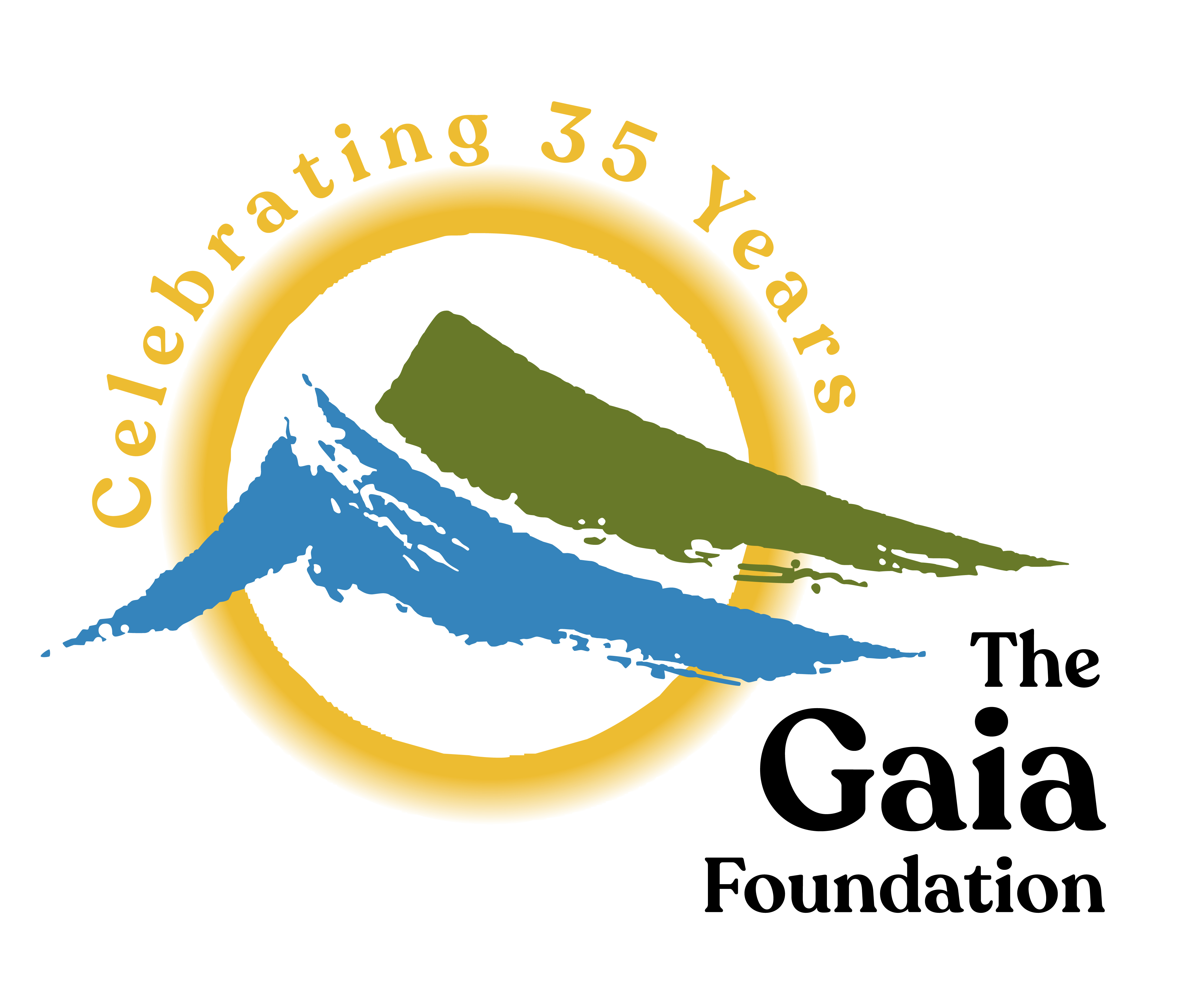‘Wh@t on Earth?’, Gaia’s latest report, argues that digital technology is disconnecting us from ourselves, each other and our living planet – at a time when re-engaging with the Earth is more urgent than ever.
 Our over-engagement with digital technologies is fed into by a never-ending cycle of destructive overconsumption. The report is therefore launched ahead of Buy Nothing Day, an international day of protest – concurrent with Black Friday in North America – against consumerism.
Our over-engagement with digital technologies is fed into by a never-ending cycle of destructive overconsumption. The report is therefore launched ahead of Buy Nothing Day, an international day of protest – concurrent with Black Friday in North America – against consumerism.
Featuring contributions from leading thinkers including Alnoor Ladha, founder of The Rules and David Bollier, a leading activist advocating for the Commons, Wh@t on Earth identifies ways in which we can reimagine our relationship with technology for the better, as individuals, as societies and as members of the wider community of life.
Wh@t on Earth?! More about the report
Through an expansive overview of recent data and contributions from leading thinkers, Wh@t on Earth’s author, Philippe Sibaud, explores the role digital technologies play in our lives today, the politics of their creation, our tendency to over-identify with them, and the dire consequences of this over-identification for our societies and the ecosystems we rely on.
Whilst acknowledging the many benefits of digital technology, Wh@t on Earth contends that “connectedness is a double-edged sword”.
Exploring epidemics of loneliness and the rise in the number of young people suffering from Internet Addiction and Nature Deficit Disorder worldwide, the report argues that increasingly pervasive digital connectivity is playing a major role in disconnecting us from ourselves and our communities, with far-reaching emotional and psychological impacts.
This disconnection is also taking place between human communities and our living planet, strengthening ideologies of human-supremacy, enabling ecologically destructive behaviours to expand, and numbing us to the consequences.
“Screen technology is taking us further away from our senses and from our animal roots. We are increasingly becoming disincarnate bodies, detached from Earth, with a false sense of omnipotence and an arrogant view that Nature, which includes our nature, can be conquered”, says Sibaud.
Wh@t on Earth demonstrates that digital connectivity- which can seem ethereal and non-material- has very real, physical consequences for our living planet.
Did you know?
- The production (and over-consumption) of digital tech requires the destructive mining of the earth and is hugely energy intensive? Read more.
- Since 2007 roughly 968 TWh has been used to manufacture smartphones- nearly the same as one year’s power supply for India (973 TWh in 2014).
- Every internet search, movie streamed and web-article browsed uses energy and emits CO2. Billions of internet-connected devices could produce 3.5% of global emissions within 10 years and 14% by 2040.
- Just 20% of global electronic-waste– much of it in digital devices- is believed to be recycled.
As Earth undergoes a sixth mass extinction event and the effects of climate change intensify everywhere from the Arctic to the Amazon, Wh@t on Earth is a rallying cry for us to reconnect with Earth beyond our screens and to re-prupose digital technology towards new societal goals.
Such re-purposing will require re-thinking the politics of our digital technologies- who has the power to decide what technology is made, what it is used for and why?
Featuring contributions from leading thinkers including Alnoor Ladha, founder of /The Rules, David Bollier, a leading activist for the Commons, and Claire Milne from the Transition Network, Wh@t on Earth identifies ways in which we can re-claim digital technology for the better, putting it in service of the well-being of individuals, societies and the wider community of life.
More from Gaia
The Gaia Foundation and our global allies have produced a number of reports and films about the impacts of the extractive industries- especially in relation to minerals and metals used in advanced technologies. Find out more through the information and links below:
- Opening Pandora’s Box– The New Wave of Landgrabbing & the Devastating Impact on Earth (2012)

- Short Circuit – The Lifecycle of our Gadgets and the True Cost to Earth (2013)
- UnderMining Agriculture- How the extractive industries threaten our food systems (2014)
- UnderMining the WaterCycle- The extractive industries and the planetary water crisis (2016)
- In Defence of Life (2016)- feature length film that follows the struggles and successes of four communities resisting mining in South Africa, Romania, Colombia and the Philippines.
- The Dark Side of Digitalisation: Will the ‘Fourth Industrial Revolution’ create new material demands? (2017)

